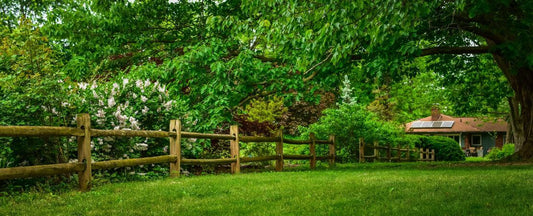All About Rhododendron and Azalea

The Differences Between Rhododendrons and Azaleas
Azaleas and rhododendrons have been interbred since the first plants were scooped out of the dirt, and while the old rule of thumb was that azaleas are deciduous and rhododendrons are evergreen, that's not their only distinction. The differences between the two are slight, so slight in fact that botanists do not break them into the two groups that gardeners have come to know. Rhododendrons have 10 stamens per flower, while azaleas have only five. While both can be deciduous, that trait is typically seen more in azaleas than rhododendrons. The shape of the leaves is often another indicator, with larger, paddle-shaped leaves typical of rhododendrons, azaleas often have smaller, elliptical leaves and trumpet, or tubular-shaped flowers at the ends of the shoots.
Let's dive a little deeper into the differences between them and how to choose the best type of azaleas or rhododendron for your landscape conditions and garden design style.
Why You Might Choose a Rhododendron Over an Azalea and Vice Versa
Rhododendrons are renowned for their stunning, large, paddle-shaped leaves, which often remain evergreen, providing a lush backdrop to your garden throughout the year. Their flowers, which bloom in clusters, range in color from vivid purples and pinks to subtle whites and yellows. Each rhododendron flower boasts ten stamens, one of the reasons for their intricate beauty. These plants are perfect as focal points in a garden setting since they can grow quite large.
Azaleas, on the other hand, charm with their trumpet or tubular-shaped flowers that bloom from the ends of slender shoots. With typically five stamens per flower, azaleas offer a more refined elegance. Often deciduous, azaleas have multi-season appeal with leaves that display vibrant hues in autumn before shedding, only to delight us again with an explosive floral display come spring. Their smaller, elliptical leaves allow for a more nuanced texture in the garden.
Deciding Between Rhododendrons and Azaleas
The choice between planting rhododendrons or azaleas often comes down to the aesthetic and functional outcomes you have for your garden.
If your goal is a year-round green display, with large blooms that command attention, rhododendrons are your go-to. They're ideal for creating dramatic backdrops, border plants, or even standalone specimens.
For those who prefer a landscape that changes with the seasons, azaleas offer a gorgeous fall palette. Their deciduous nature and brilliant autumn colors provide a dynamic visual, while their spring blooms signal the end of winter and the renewal of spring.
Planting with Purpose
Both rhododendrons and azaleas thrive under similar conditions, slightly acidic, well-drained soil, and partial shade. However, their differing bloom styles and foliage can inspire various garden themes.
For a Cottage Garden you might opt for azaleas, with their quaint, trumpet-shaped flowers and softer foliage that creates a whimsical, cozy feel.
For a Formal Garden, the robust, structured appearance and evergreen presence of rhododendrons lend themselves well to more formal or classical garden designs.
Let the distinct qualities of rhododendrons and azaleas guide your garden design and create a space that is uniquely yours.


